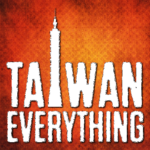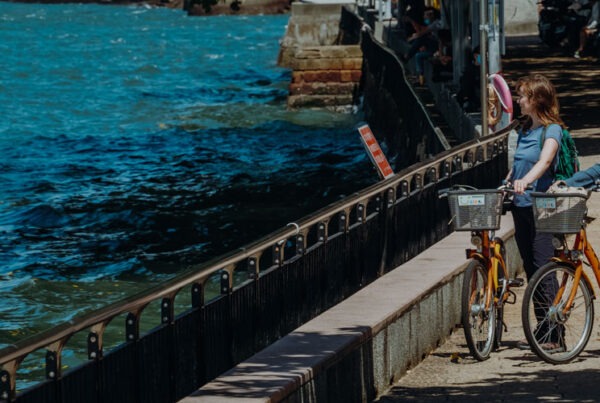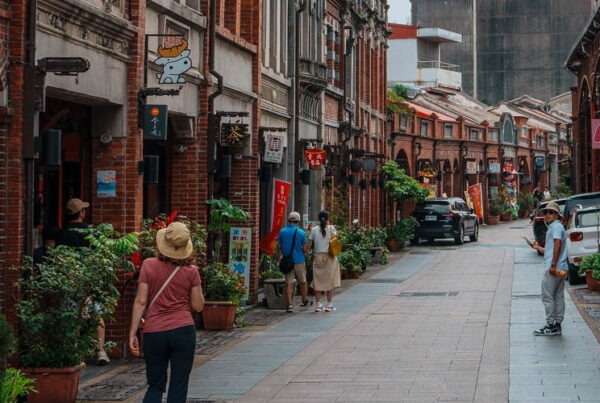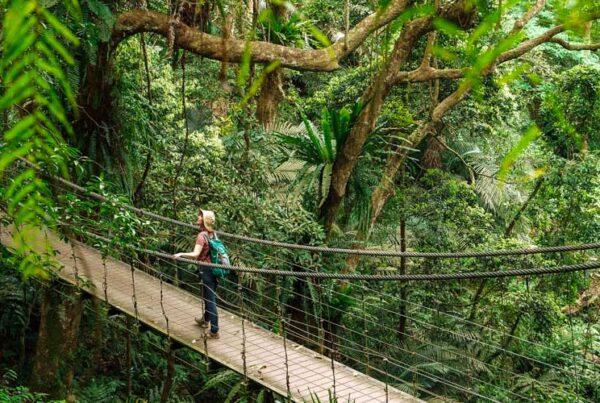Discover Cultural Gems and Picturesque Landscapes in East Taiwan
TEXT | RICK CHARETTE
PHOTOS | VISION
While island Taiwan’s west side and far north are places of dense population and fast-paced activity, its east – Hualien and Taitung counties – is a land of more idyllic human/nature balance. Mountains come close to the rugged coastal shore the entire length, leaving slivers of flat and fertile space for a less dense population to use. Tall palms sway, breakers roll timelessly in from the big-blue broad Pacific, deep narrow valleys cut away inland, sliced through the mountain fastness by impossibly small rivers, and relaxation permeates the air.
Below, discover a few themed suggestions that will immerse you in the enchanting beauty of Eastern Taiwan, featuring some must-see cultural and scenic attractions in the vibrant cities of Hualien and Taitung, as well as in the serene valley that connects them.
There are two cities on the east coast, Hualien and Taitung, named like the counties they are part of, and we’re visiting both. Each has a population of about 100,000, and both have significant indigenous populations, as does the Hualien/Taitung region as a whole. The city of Hualien is at the north mouth of the 180km-long, narrow, fertile, and majestically mountain-cupped East Rift Valley – which we’re visiting as well – and Taitung is at the south mouth.
Hualien City – History and Nostalgia
In Hualien City, a few hours at the Hualien County Stone Sculpture Museum (stone.hccc.gov.tw) is highly recommended. The eponymous county is a lucrative source of world-class marble, jade, rose stone, and other stones, and while perusing the museum’s indoor exhibits and Outdoor Stone Sculpture Park you will learn all about how the region has become a creative hive for stone sculpture art, viewing modern works as well as antique Buddhist sculptures, aesthetic elements taken from heritage buildings, and other traditional stone works.

The complex that is today the abode of the Hualien Railway Culture Park was originally the operations center for all eastern railway operations, constructed in 1932. You can view displays in buildings once housing offices for senior administrators, construction section personnel, railway police, archives, detention cells, and a blacksmith workshop, and enjoy a period-costume experience. Sitting outside is a refurbished heritage steam locomotive used in the east.


Don’t miss the chance to check out some of Hualien’s alluring nostalgia cafés. Café Shouwa (www.facebook.com/shouwa58) brings you back to Japan’s imperial Showa era; the Japanese-style desserts are delectable. Morning Mountain (www.facebook.com/himorningmountain) is in a quaint Japanese-style wood-built dormitory building used by the Japanese imperial forest service. Mole Man (www.instagram.com/chihnan_) is your time transporter to 1960s Hualien culture.






While in the city, be sure to visit Dongdamen Night Market, the city’s largest night market with 400-plus stalls. It has an irresistible carnival flair. Laid out in a street grid, it sits on a massive square paved with black and white granite slabs, bringing a distinct “stone of Hualien” flavor. Likely of greatest interest for foreign visitors will be the “Indigenous People’s Street,” with stalls serving bamboo rice, barbecued wild boar, stir-fried mountain vegetables, millet wine, and other specialties.


Taitung City – Scenic and Cultural Parks
The Beinan River drains the waters of the East Rift Valley’s south sector, debouching into the sea just to Taitung City’s north. Between the city and the river sits the 280ha Taitung Forest Park, a splendid place for cycling. Taitung folk call this coast-protecting reserve the “Black Forest,” after its tall, dark-hue beefwood trees. Leave time for the two lakes in the park; Pipa Lake has lookouts to savor the bird and fish inhabitants, and Flowing Lake has facilities for water fun such as kayaking and stand-up paddleboarding.

The forest park’s bikeway connects with Haibin (Seashore) Park, stretched out seaside beside the city’s northeast quarter. The cycling you’re doing here is all part of the popular 21km Taitung Mountain-Ocean Bikeway. In contrast to the forest zone, Haibin Park is a wide-open, breeze-swept expanse with sweeping Pacific views eastward and sky-bound peaks westward. Its manmade aesthetic showpiece is Paposogan, a large rattan dome with a tree-shaded viewing deck. Inside is a large rattan tree, which represents Earth; the dome symbolizes the surrounding universe.


Taking you right through the city’s heart, southeast to northwest, is the green and breezy 6km Taitung Old Railway Corridor. The city’s original railway station – at the corridor’s southeast terminus – was retired in 2001, and a new station was built on the northwest outskirts. Today the cycling/walking route is framed with planted trees and further prettified with garden landscaping. At the southeast end of the corridor is the Taitung Railway Art Village, a key local tourist gem.


Taitung Sugar Factory Cultural and Creative Park, which is along the aforementioned mountain-ocean cycleway, is Taitung County’s largest industrial-heritage complex. As with Taiwan’s arsenal of other priceless sugar-factory heritage sites today refashioned into tourist destinations, it was built by the Japanese during their rule of the island 1895-1945. You can easily lose yourself for a half-day in this sprawling creative-arts space inhabited by galleries, workshops, craft shops, and cafés.

Cycling in the East Rift Valley
The East Rift Valley is a garden of charm for cycling enthusiasts, with a wide assortment of outing options, from dedicated bikeways to on-road routes. For the latter, the east’s low population density and comparative isolation from the crowded west/north mean low motor-vehicle density, and the highways have both wide shoulders and special markings for bike lanes. The East Rift Valley National Scenic Area Administration has a helpful introduction of nine of the premium excursion options online (theme.erv-nsa.gov.tw/bike/zh-tw/themes/list; Chinese). As samples, here are two especially popular with foreign visitors, one each in Hualien County and Taitung County.

The flat, 9.7km Yufu Bikeway is built on the railbed of an old railway line. “Yufu” refers to adjoining Yuli and Fuli, Hualien County’s southernmost townships. Most riders start at the north end, in the town of Yuli. While meandering past the enchantingly colorful rice paddies and rapeseed fields (in season), you traverse the long former railway bridge over the Xiuguluan River, see the remains of the tiny former Antong Station, and can refresh before your return run at a sweet café inside the village of Dongli’s old station.

The 12km Guanshan Town Circle Bicycle Path was the very first dedicated bikeway created in Taiwan. It circles Guanshan in a large, lazy loop. There are two sections, a flat Water Section and a gentle-slope Mountain Section. The first takes you through rice paddies, with other highlights including irrigation canals, a strawberry and vanilla field, and bamboo art installations. The second lifts you above the town, presenting wide farm-field-tapestry vistas.

Two other selections notably popular with foreign visitors are the 4.8km lake-loop pathway at Hualien County’s Liyutan (Carp Lake), in a basin surrounded by low mountains, and the approximately 30km network of cycle paths beside the Taitung County town of Chishang, which whisk you through a sea of tiered rice paddies. Note that with all these options, bike rentals from quality operators are readily available.














